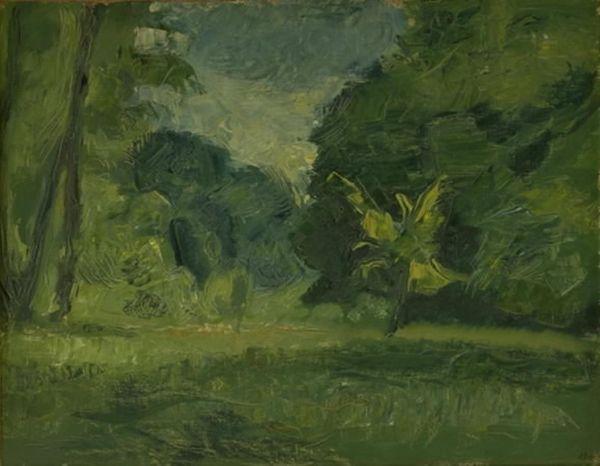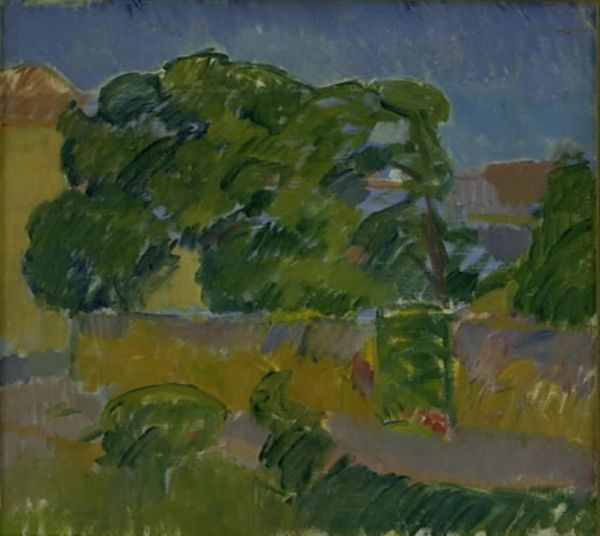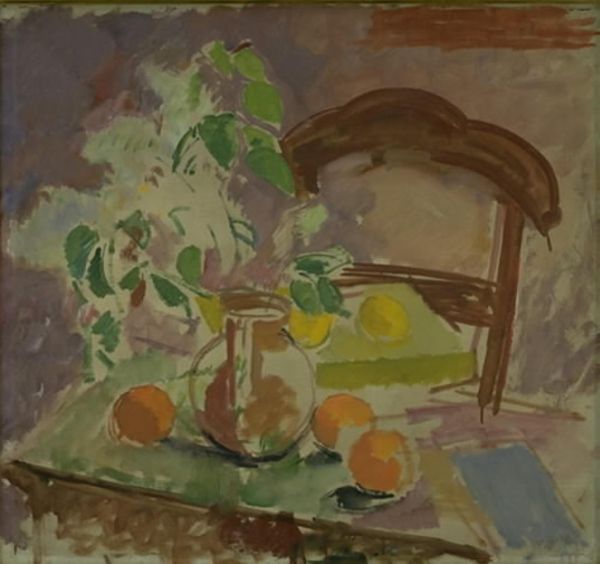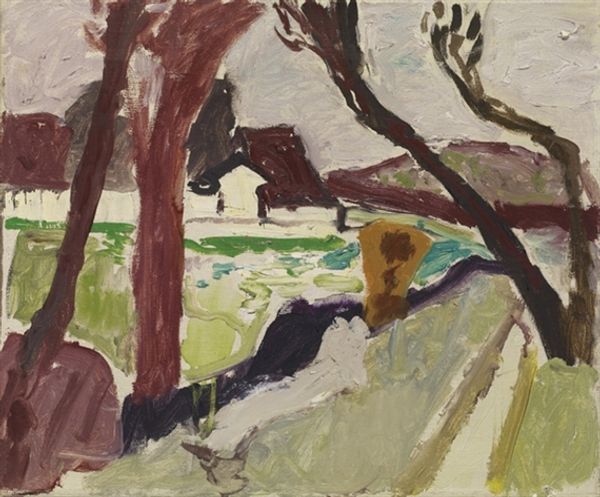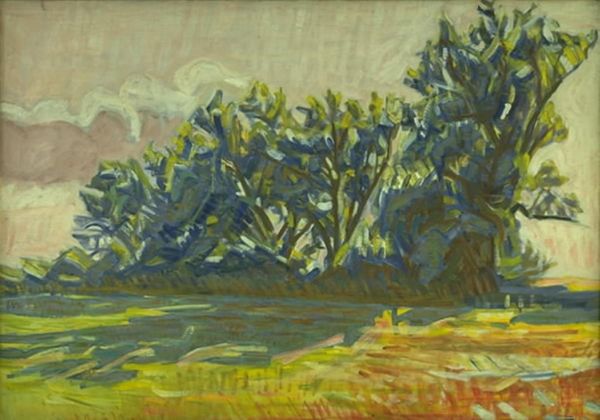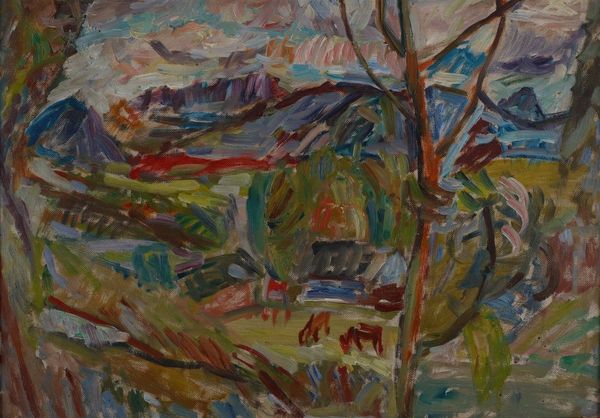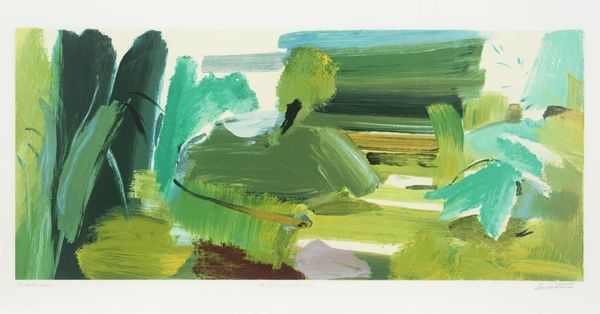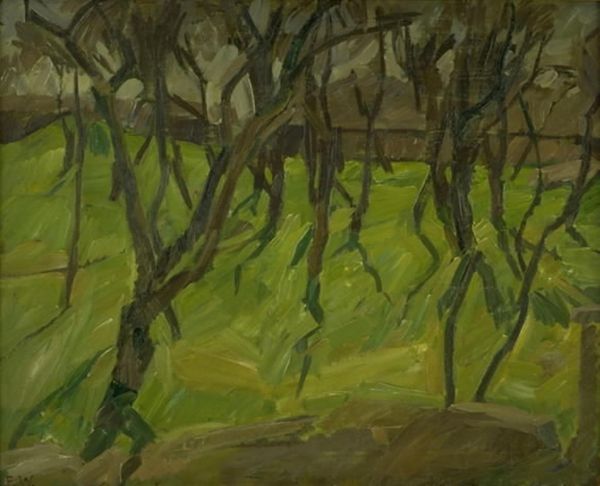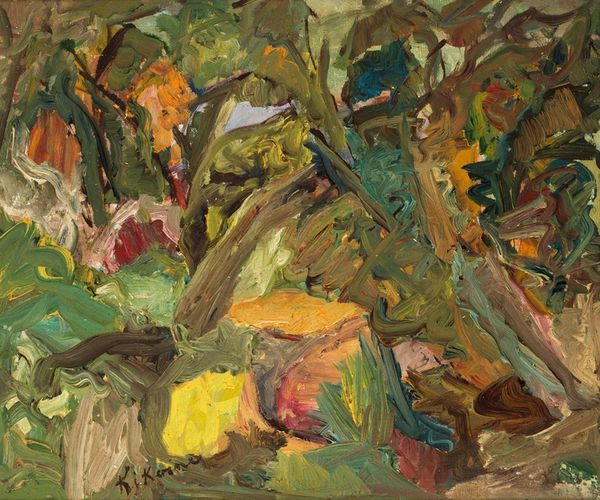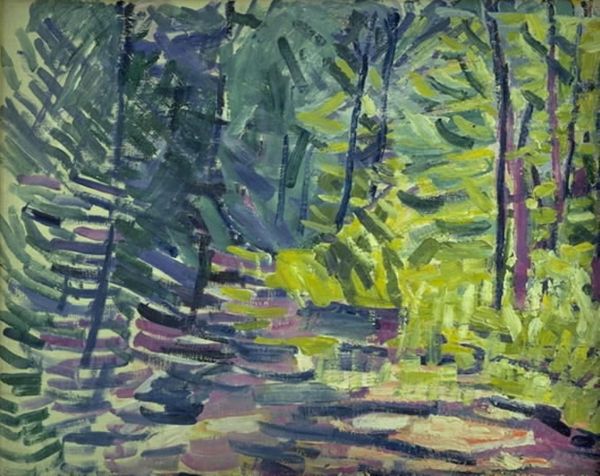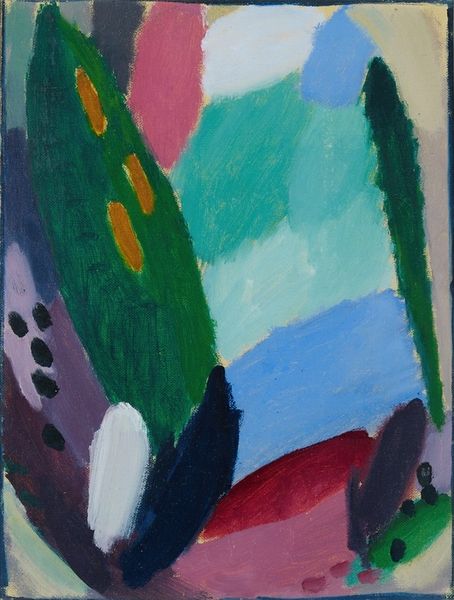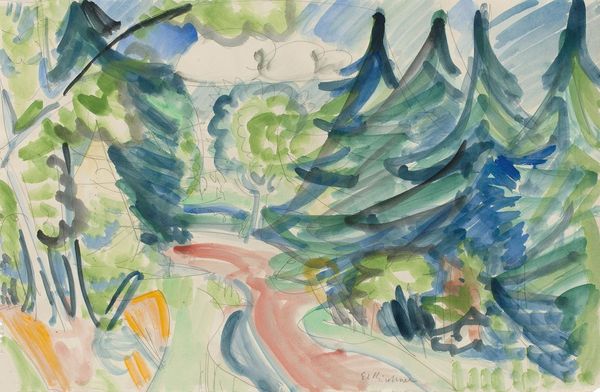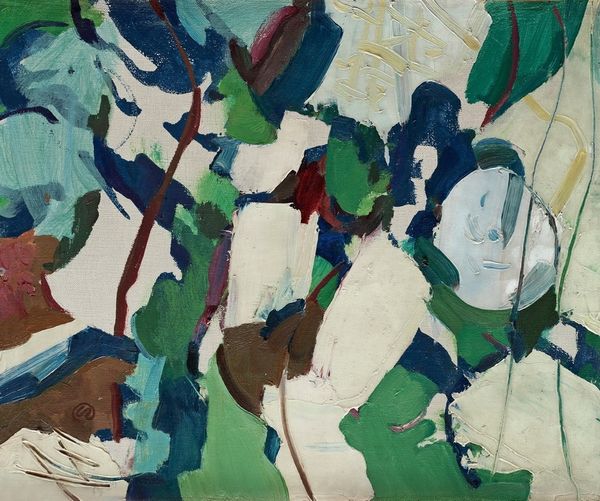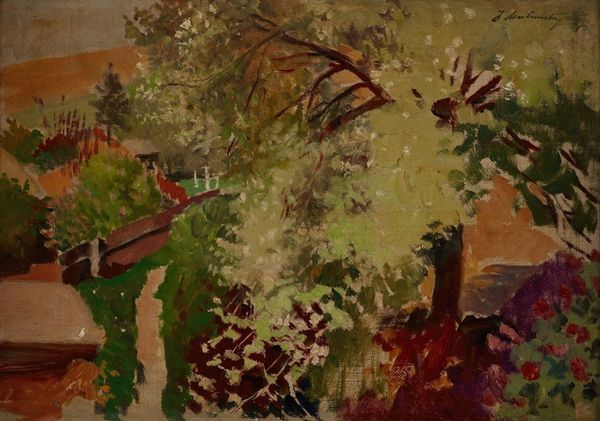
painting, oil-paint, canvas, impasto
#
painting
#
oil-paint
#
landscape
#
oil painting
#
canvas
#
impasto
#
abstraction
#
modernism
Dimensions: 138 cm (height) x 150 cm (width) (Netto), 164.5 cm (height) x 173.4 cm (width) x 8.5 cm (depth) (Brutto)
Curator: Before us, we have Edvard Weie's "A Forest Road," an oil painting on canvas dating back to 1932. Editor: My immediate impression is one of gentle tranquility, a kind of softened landscape, almost abstract. The palette is primarily variations of greens and grays, a harmonious convergence of hues. Curator: Absolutely. Consider Weie's historical context. This painting emerges from a modernist era grappling with industrialization. One can argue that "A Forest Road" subtly resists this encroachment, offering an almost utopian vision of untouched nature. It speaks to a yearning for the pre-industrial past. Editor: I'm intrigued by the brushwork. Notice the visible impasto? Thick strokes that give the trees almost sculptural form. It's as if the paint itself is becoming the landscape. The texture suggests more than just representation; it emphasizes materiality and an emphasis on form and the artistic process. Curator: True. Weie, influenced by early 20th century philosophical movements that privileged the individual experience, imbues this seemingly simple landscape with a deeply personal interpretation. The forest road perhaps representing his own journey through art and life during a politically turbulent time. The muted colors evoking melancholy and nostalgia, which would be key themes in modernist works produced after World War One. Editor: But even without knowledge of that context, the visual language here is potent. The arrangement of the composition directs the gaze upwards and towards an implied horizon—even though that point isn’t explicitly defined within the pictorial space. The subtle tonal variations create an impression of light filtering through foliage. Curator: Precisely. It reminds us of how artistic creation can simultaneously reflect societal concerns and be intensely personal, creating meaning for its time and for generations that follow. It speaks of an inherent human desire to reconcile progress with our fundamental need for nature, which continues to resonate with environmental and social justice movements today. Editor: Indeed, it showcases the power of simple compositional decisions to evoke complex emotions, like serenity mixed with subtle anxiety about finding one’s way on the "road." Weie invites a visual and perhaps even psychological exploration into form and perception, which resonates through time.
Comments
No comments
Be the first to comment and join the conversation on the ultimate creative platform.
